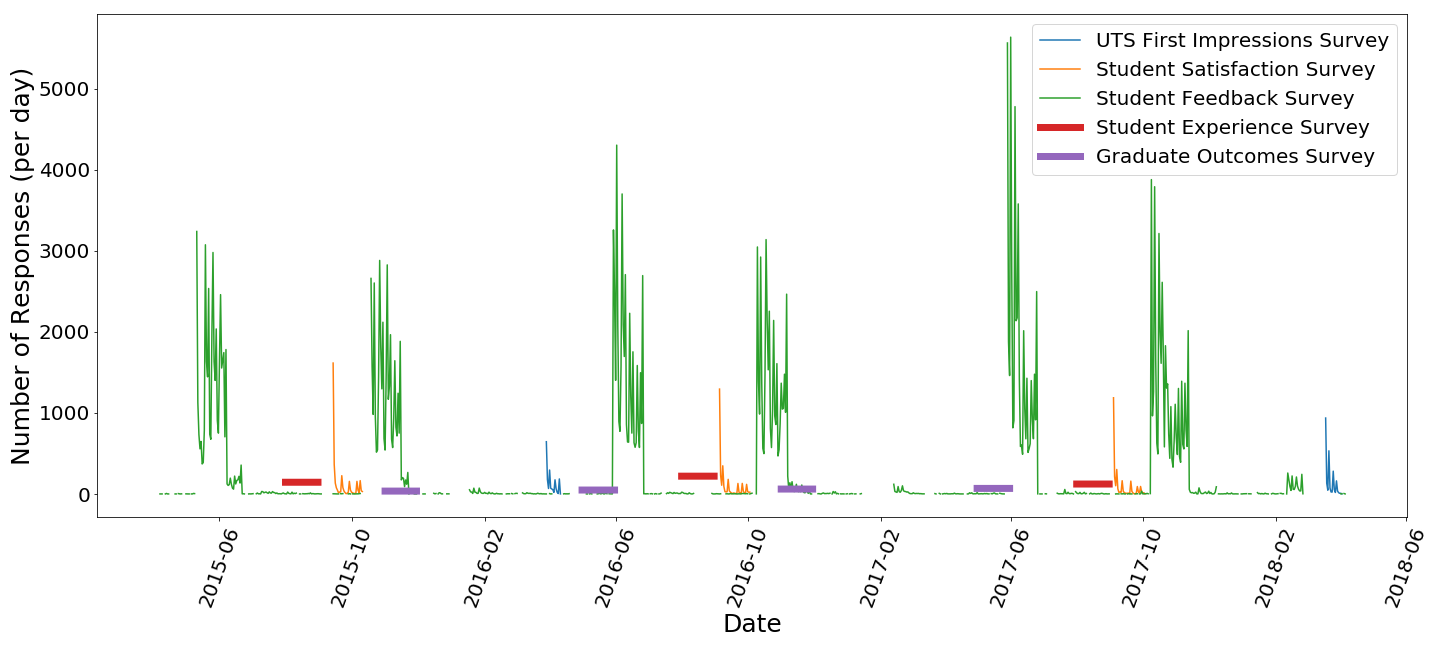In summary:
The SEA Project uses a time series representation (advanced statistics and exploratory visualisations) of the student response rates from available survey data to deliver valuable new insights to student experiences
Already, it has uncovered hidden strengths and weaknesses, enabling CIC to better respond to faculty queries about this data
What would we learn about the student experience at UTS if we crunched together a whole bunch of quantitative and qualitative data? What will it tell us about the student experience throughout a student journey? That is exactly what we are trying to discover with the SEA Project.
The experience students have at university is often an important component of their lives, sometimes even the defining component. It is, therefore, important to understand and try to maximize the benefits of that experience. The Student Experience Analytics (SEA) project aims to help with this in a data-driven way.
Students, in their path, leave behind a wealth of data and information about their experiences. This can be directly, in the form of feedback and survey participations, and indirectly such as their unique choices and paths taken. Gathering and combining this information can provide a broader, deeper and more insightful understanding of the student experience as a whole. To this end we are bringing together a number of different surveys and data-sets relevant to the student experience to help UTS understand what are the current key successes, and at the same time, expose neglected areas that require future improvements and attention.
UTS students undertake a variety of surveys to provide feedback about their experiences. These include: the UTS First Impressions Survey; The Student Experience Survey; the Student Satisfaction Survey; the Student Feedback Survey, which provides feedback at the individual subject level; the Graduate Outcomes Survey which provides a post-graduation touch point. This combined with various other information about the student population provides a new and powerful resource for improved holistic insights into the student experience. The combined data not only captures data-points at different times throughout the student experience it can also provide a fairer and broader representation of the student population. This is because, even though the response rates for many individual surveys are often quite low, most students respond at some point during their studies.
To do justice to the bigger data-sets, the SEA project also aims to employ modern survey analysis and statistical methods. An example of this, we have begun work on the development of new software and algorithms employing state-of-the-art Natural Language Processing (NLP) and Machine Learning (ML) techniques to better extract information from the hundreds-of-thousands of anonymous written feedback comments received from UTS students.
The SEA Project endeavours to strategically integrate available student experience resources to generate another dimension of new insights. It’s potential is a fundamental leap towards accurate and better understandings of the student experience – the very centre of UTS’ core values.

